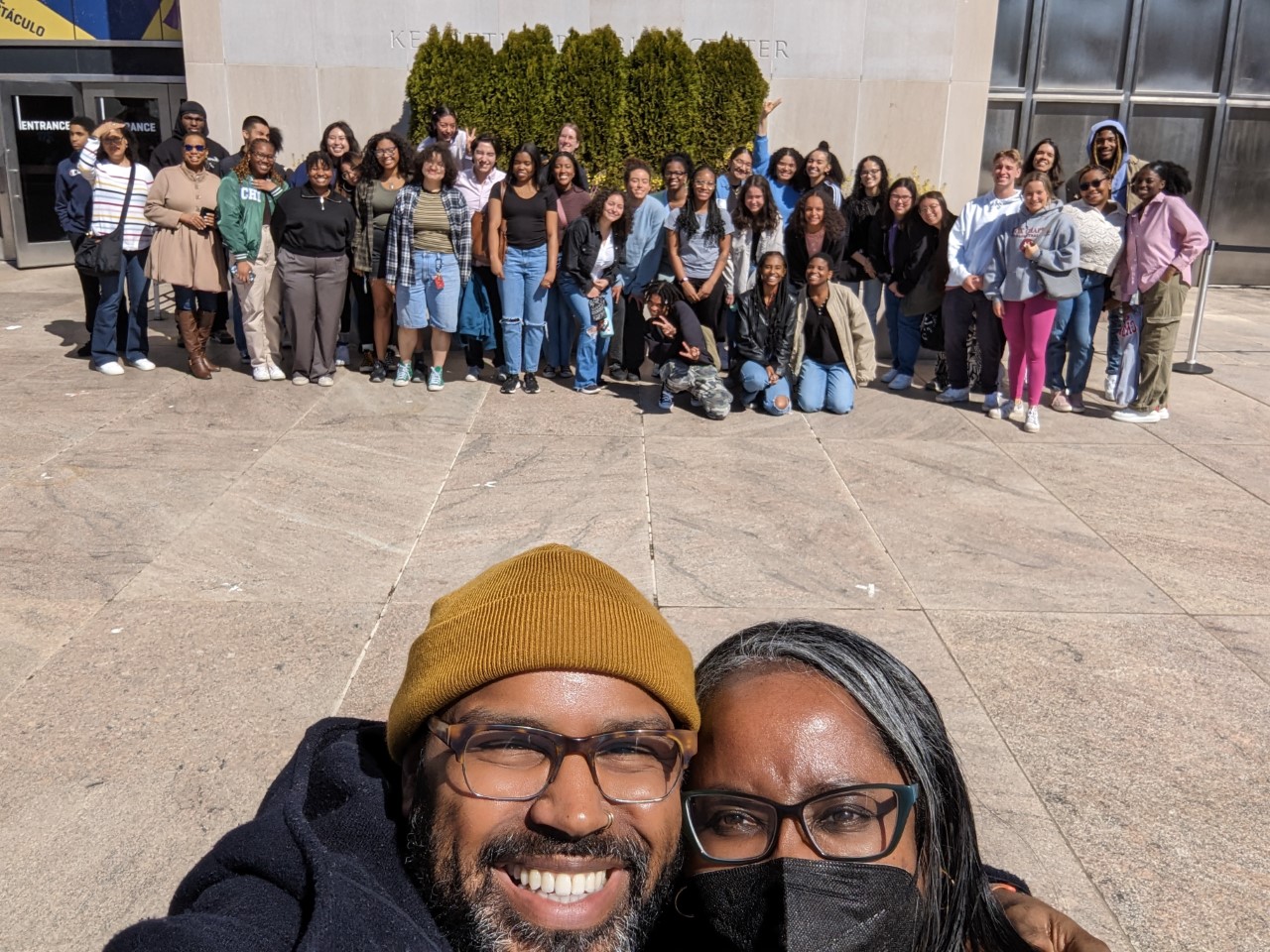On Sunday, March 26th, Professor Amaury Sosa’s Introduction to U.S. Latinx/Chicanx Literature class joined the Department of Africana Studies on a field trip to Washington, D.C. Together, students visited the National Museum of the American Latino and the National Museum of African American History and Culture.
In the Latinx literature class, students recently read Odisea del Norte, a novel detailing a protagonist’s migration from El Salvador to Washington. In addition, the class studied the 1991 riots that took place in La Manplesa, a predominantly Latinx neighborhood in Washington, D.C. Spanish students enjoyed the opportunity to travel to Washington where efforts to represent Latinx culture and individuals have recently increased.
According to the Smithsonian Website for the National Museum of the American Latino, the United States Congress passed legislation on December 27, 2020 to establish a museum. While there is not yet a building for this museum, students visited a preview exhibition that opened on June 18, 2022 in the Molina Family Latino Gallery. This exhibit is located on the bottom floor of the National Museum of American History and is the Smithsonian’s first gallery representing the experience of the U.S. Latino.
After visiting the Latino exhibit, students explored the National Museum of African American History and Culture. The museum opened in 2016 and highlights the history and contributions of African Americans. The museum’s website writes, “The National Museum of African American History and Culture is the only national museum devoted exclusively to the documentation of African American life, history, and culture.” In visiting these two museums, students were able to gain insights that they would utilize in the creation of a final essay or project.

It’s incredible to hear about Professor Sosa’s Introduction to U.S. Latinx/Chicanx Literature class embarking on a field trip to Washington, D.C. to visit the National Museum of the American Latino and the National Museum of African American History and Culture. This kind of immersive experience must have been both educational and enriching for the students.
I can only imagine the excitement and relevance the trip held for the students studying Latinx literature, particularly after discussing the novel Odisea del Norte, which depicts the journey of a protagonist migrating from El Salvador to Washington. Exploring the Latinx presence and culture in a city with a significant Latinx population must have provided valuable context and real-life connections to their studies.
It’s interesting to learn that while there is currently no physical building for the National Museum of the American Latino, a preview exhibition has been set up in the Molina Family Latino Gallery at the National Museum of American History. It’s commendable that the Smithsonian has taken steps to represent the U.S. Latino experience, and it must have been a wonderful opportunity for the students to witness this historic moment.
Continuing their journey, the students visited the National Museum of African American History and Culture, which opened in 2016. This museum holds immense significance as it is the only national museum dedicated solely to documenting African American life, history, and culture. I can only imagine the powerful impact this visit must have had on the students, providing them with a deeper understanding and appreciation for the contributions of African Americans.
Overall, this field trip sounds like a fantastic way for students to engage with literature and history in a tangible and immersive manner. I’m curious to know if the students had any specific takeaways or if there were any particular exhibits or moments that stood out to them during their visit to these two museums?
Many students who took Spanish 295 class captured pictures at the Molina Family Latino Gallery that they incorporated into their final projects for the class. In addition, it seemed that students enjoyed the cultural exhibits of the National Museum of African American History and Culture. Exhibits focused on Black contributions to popular culture through music, film, literature, etc.